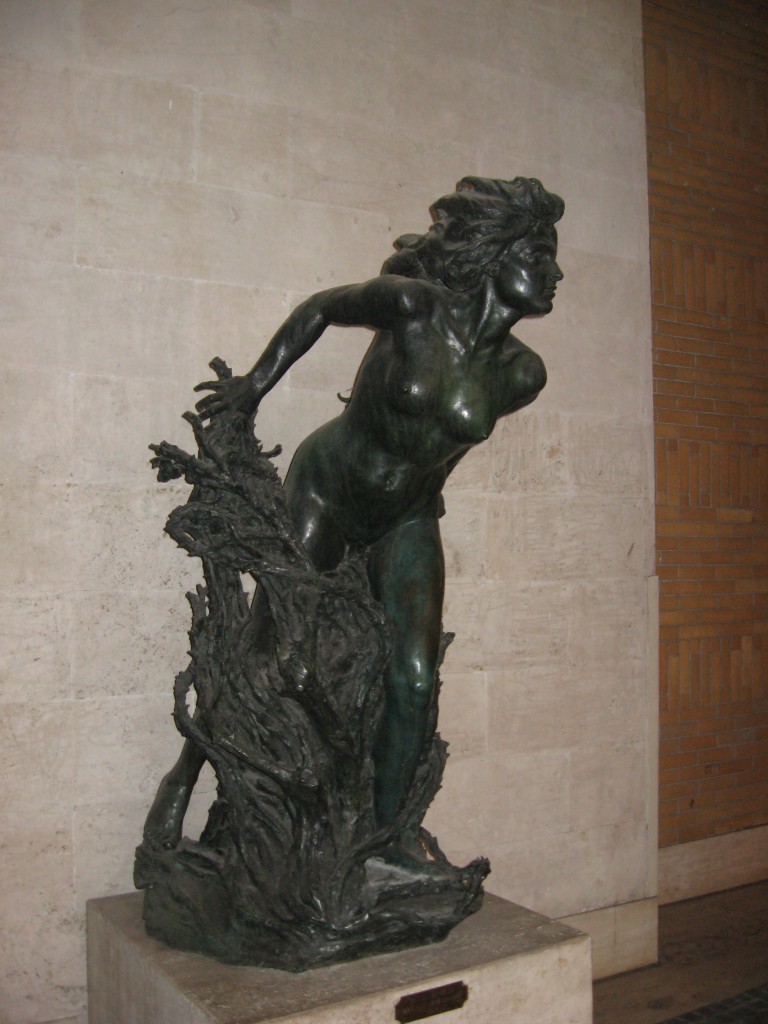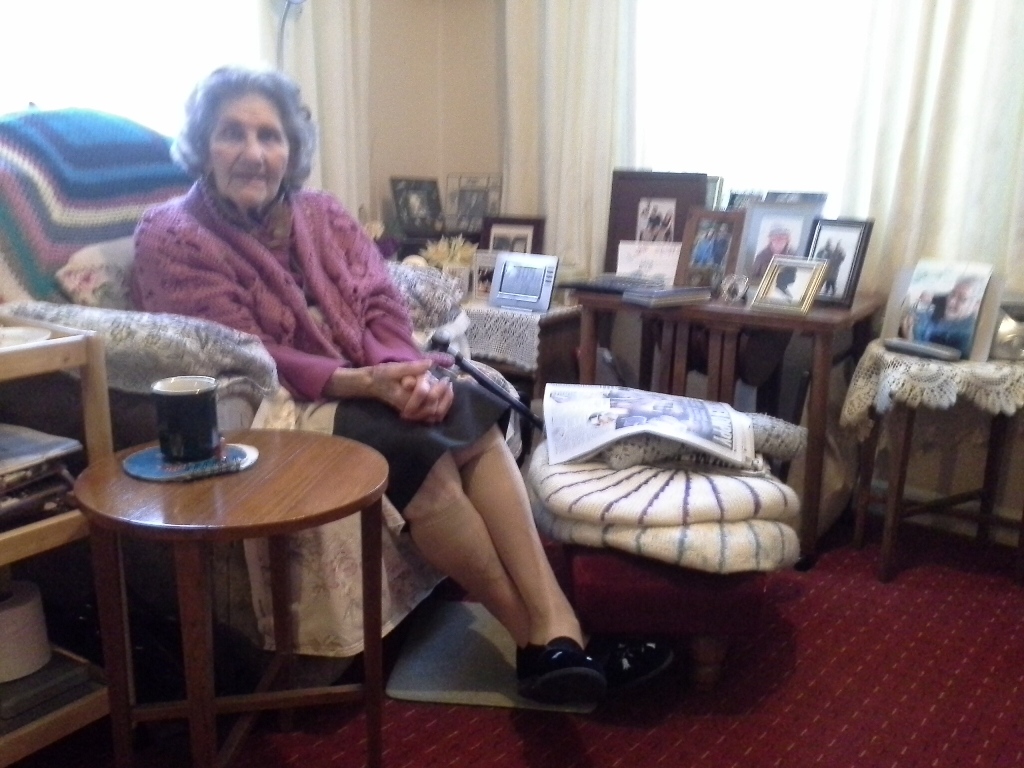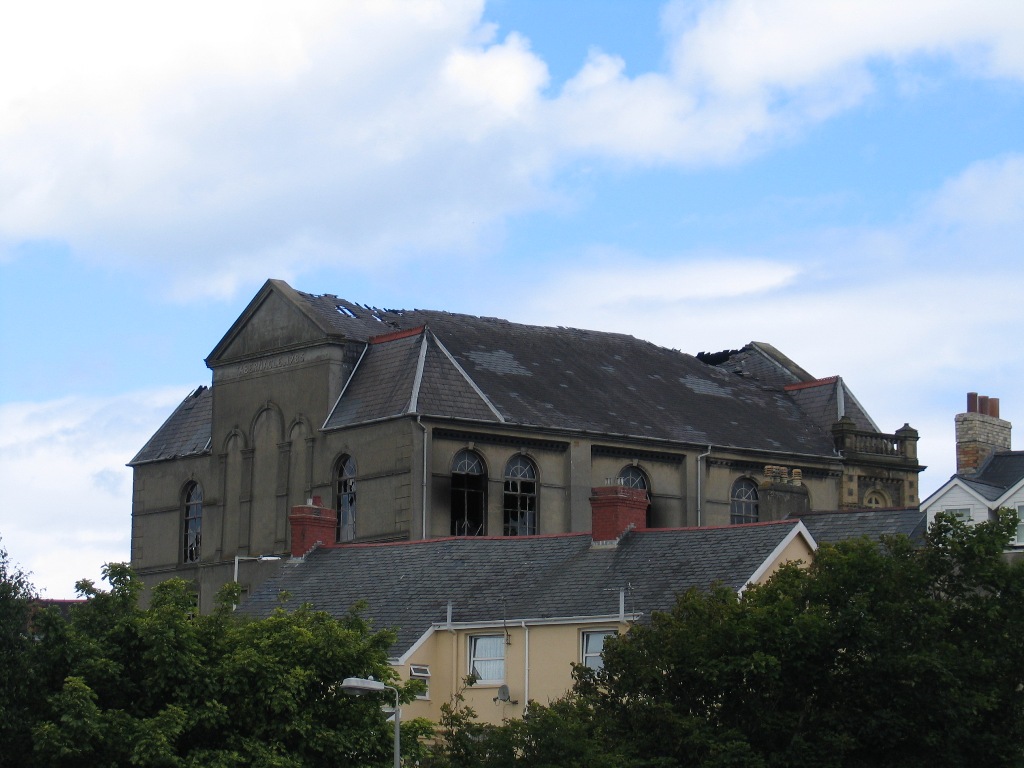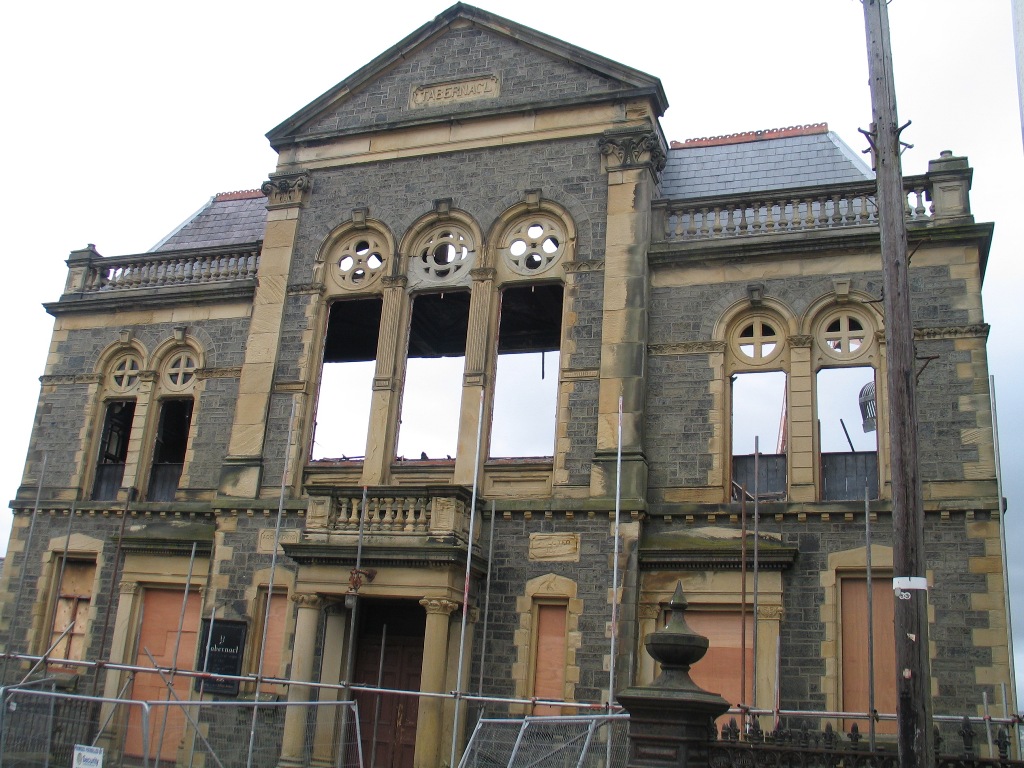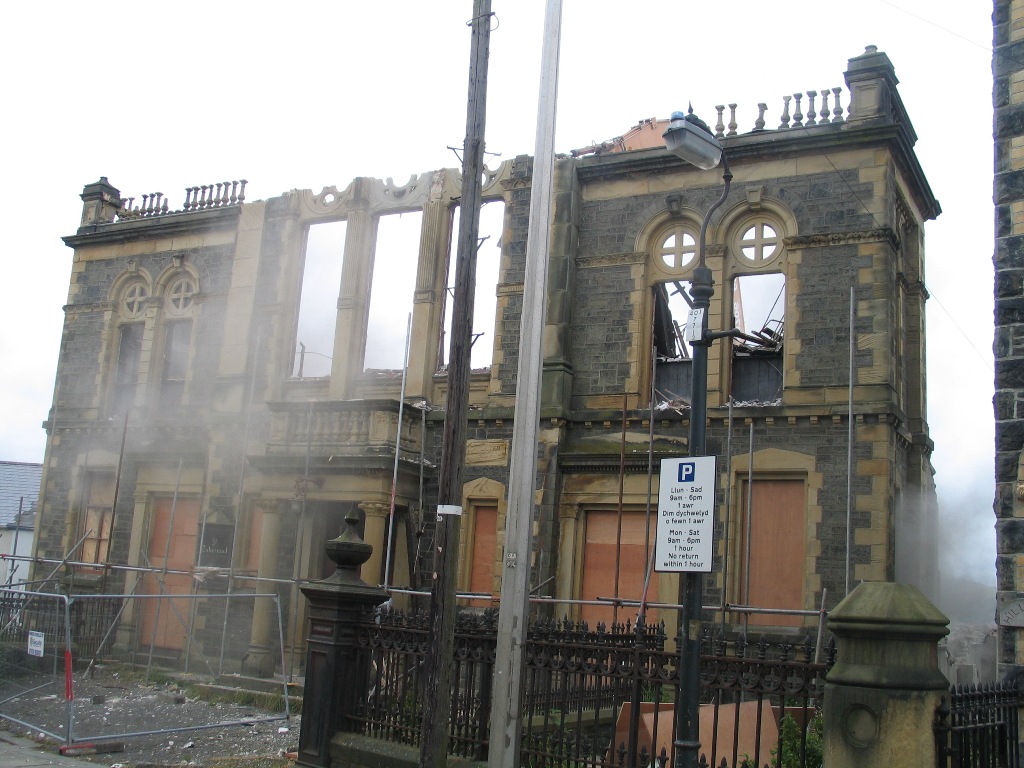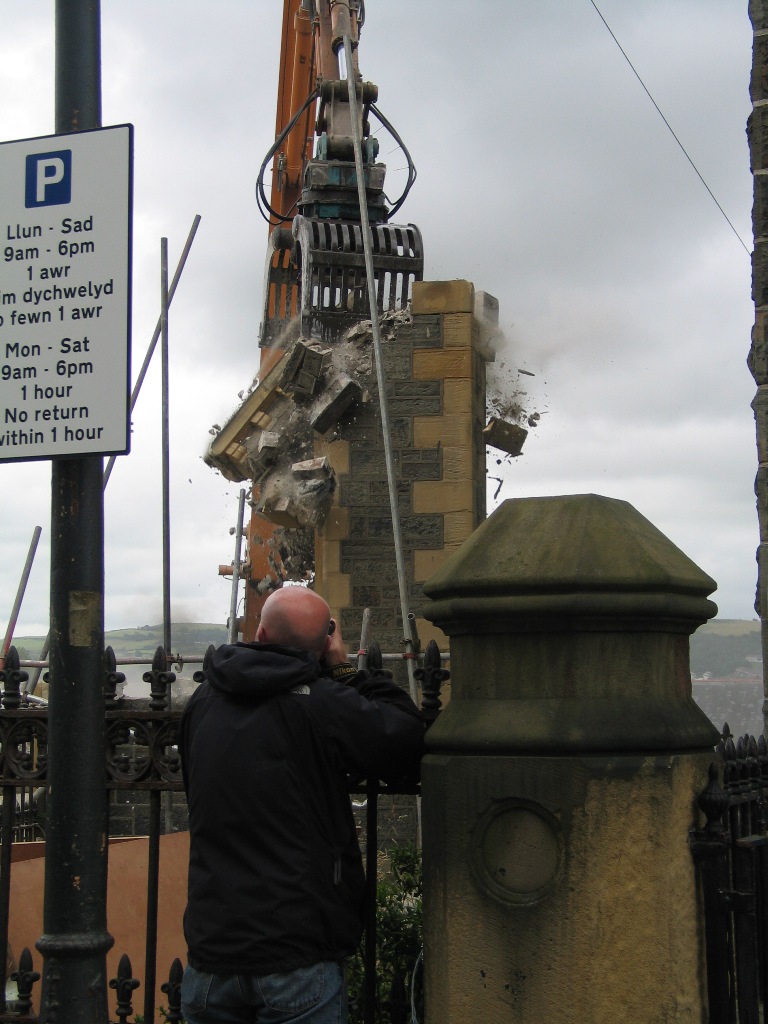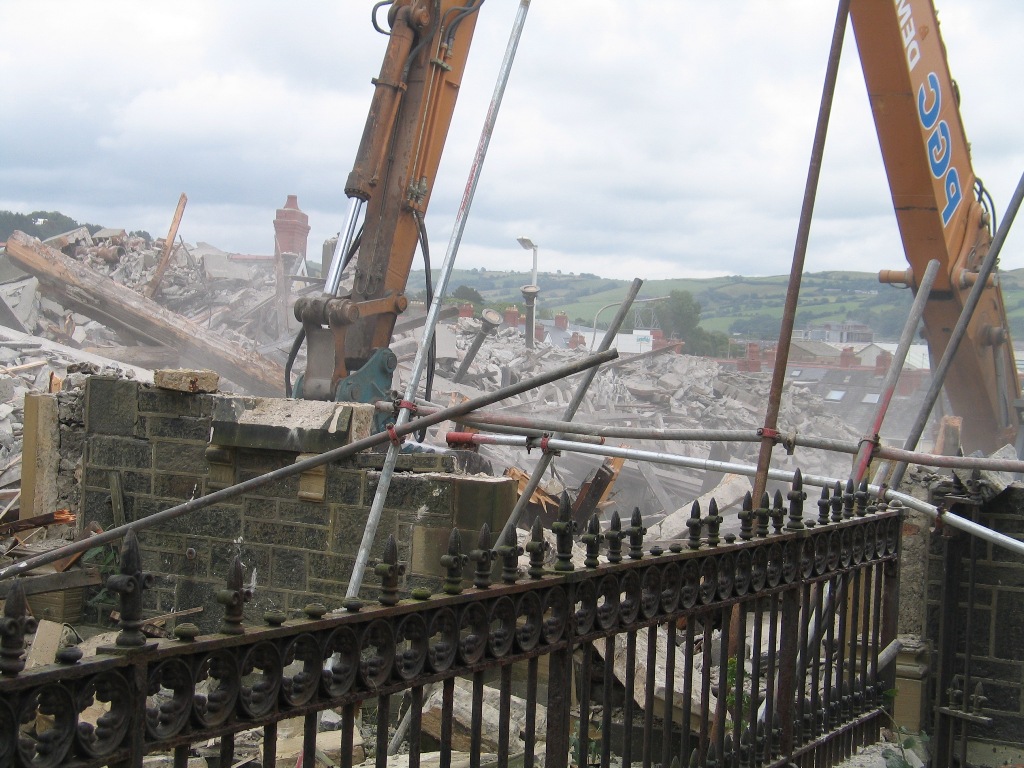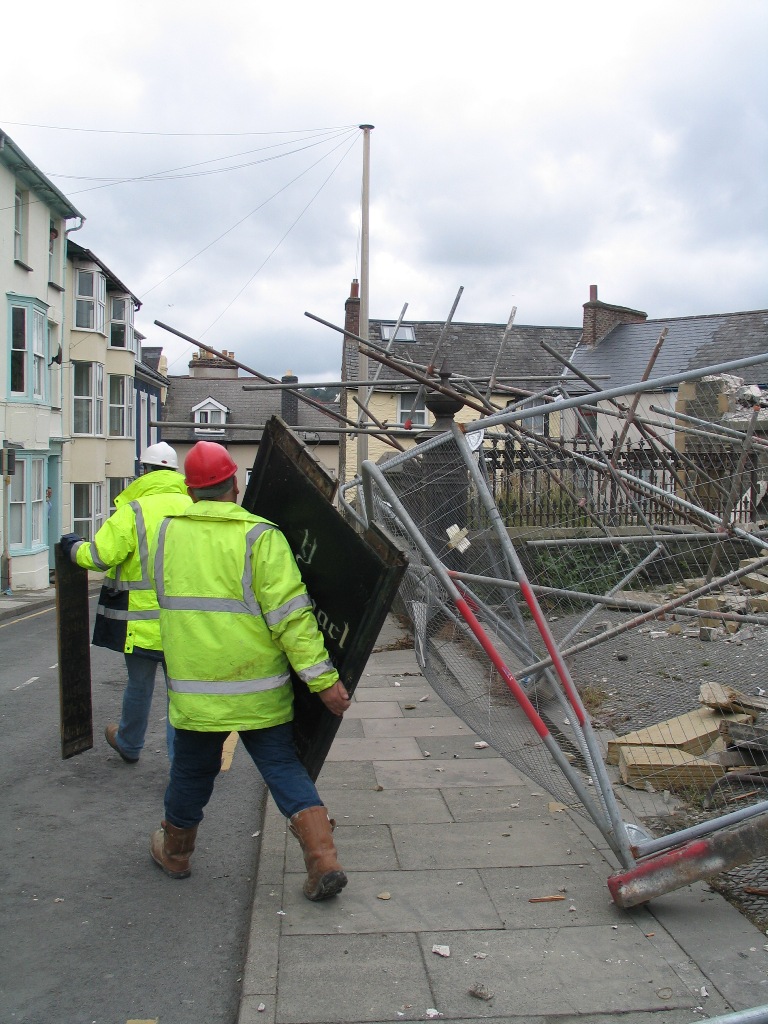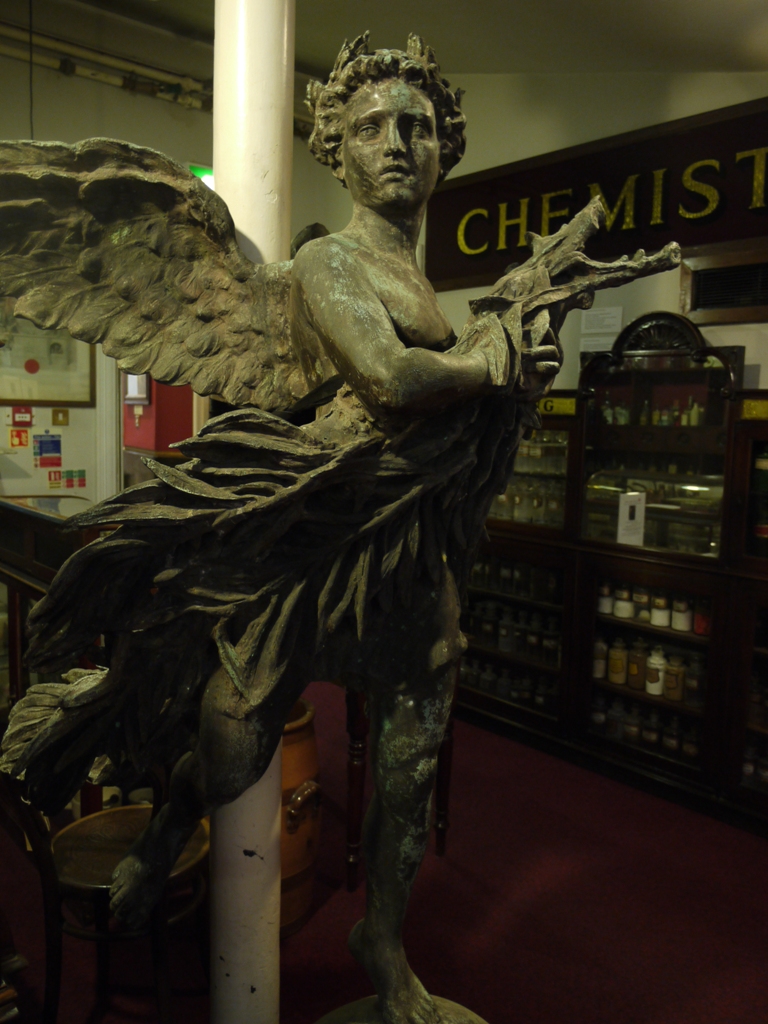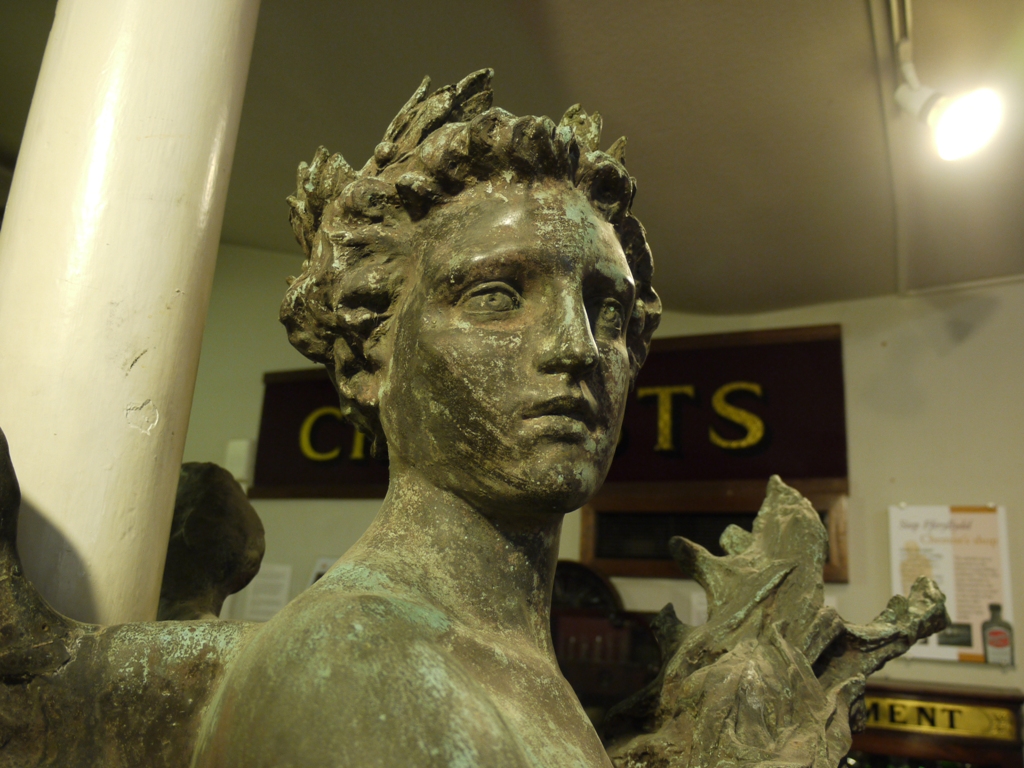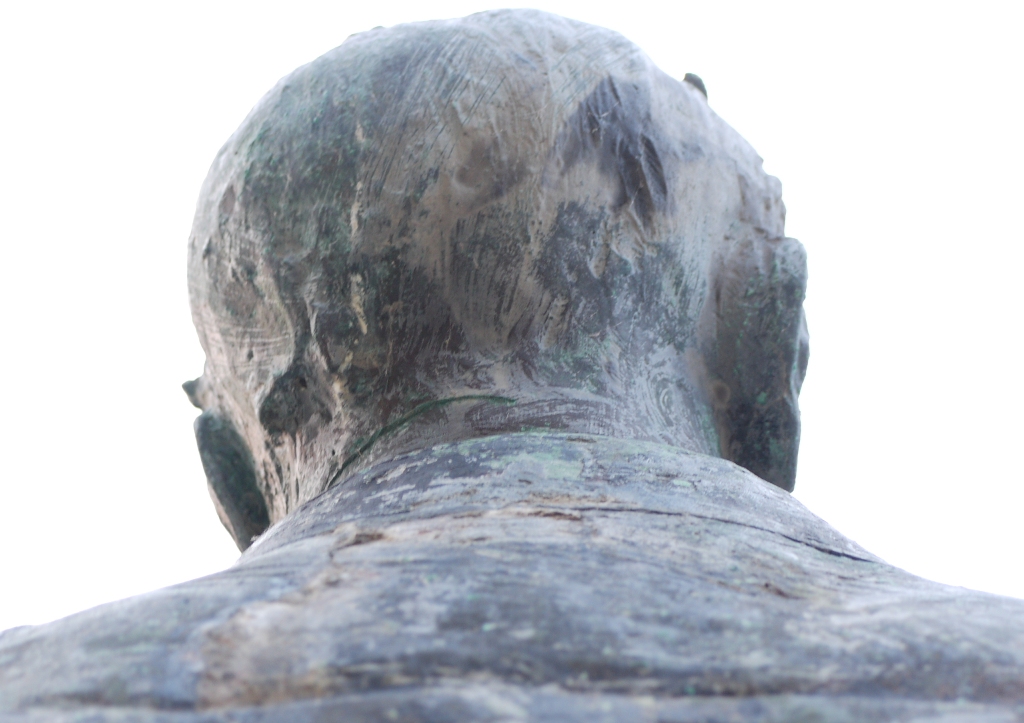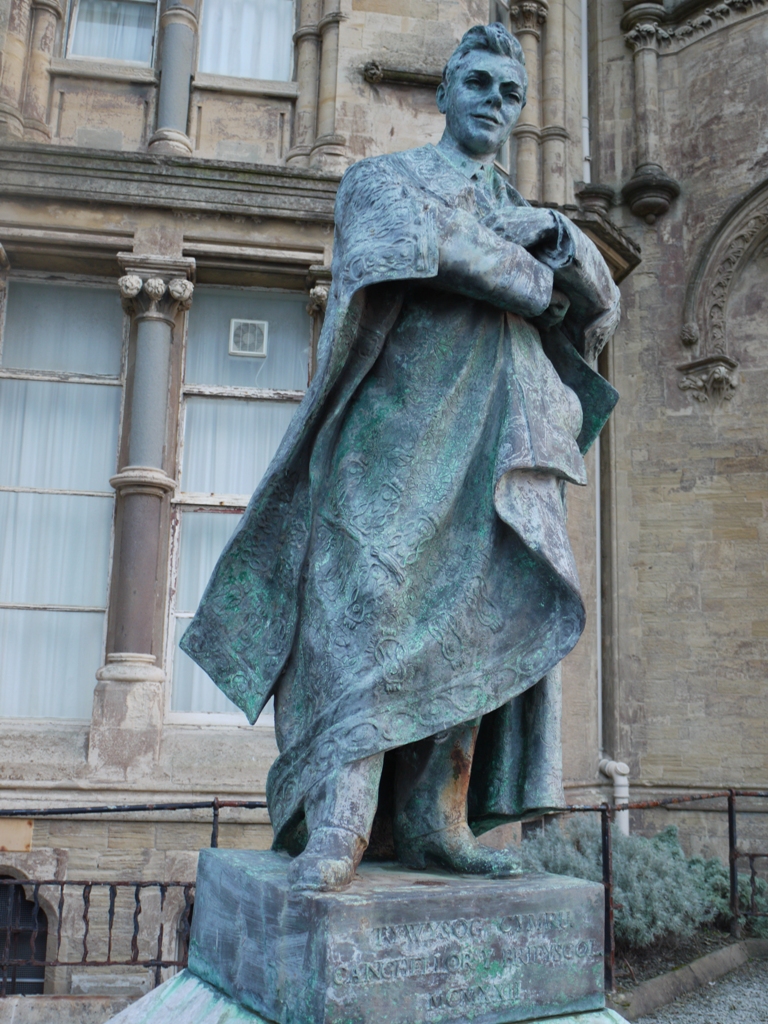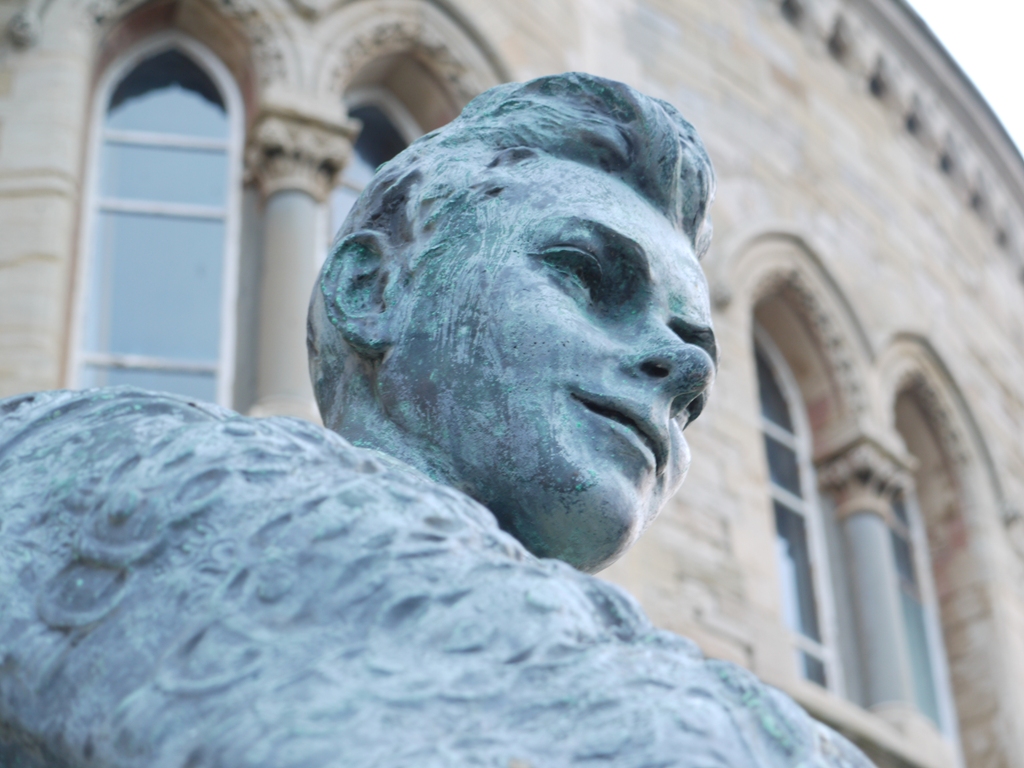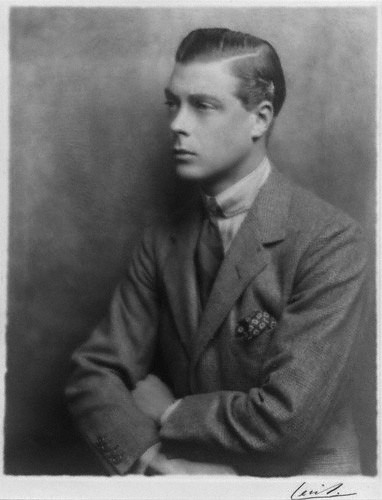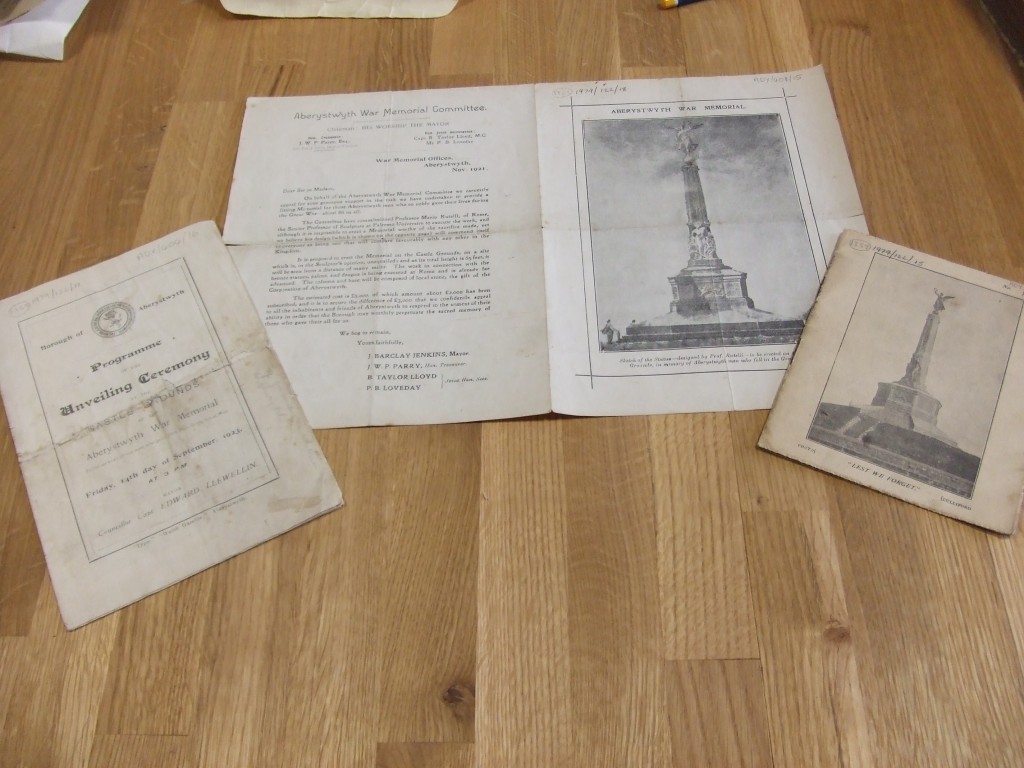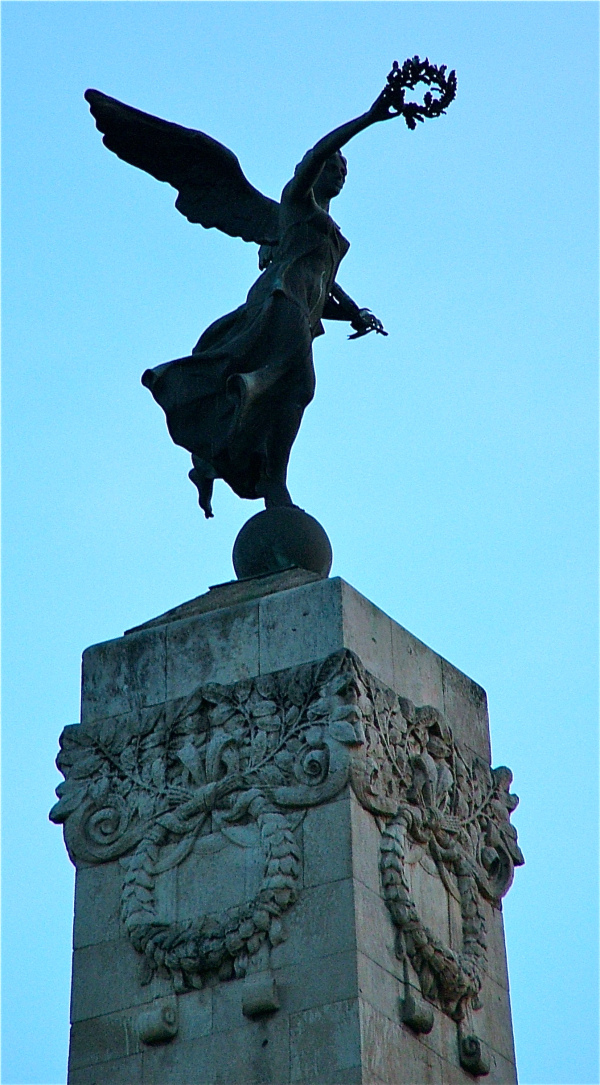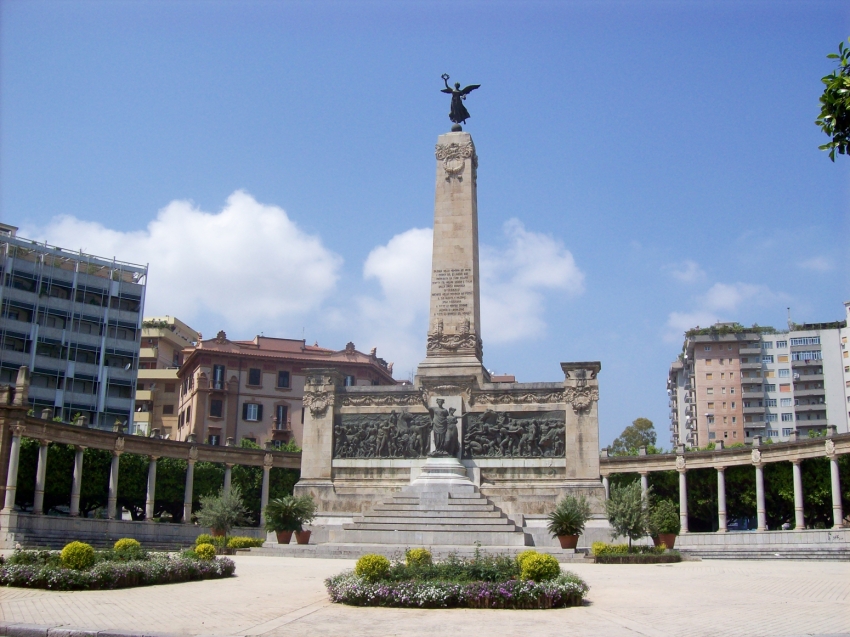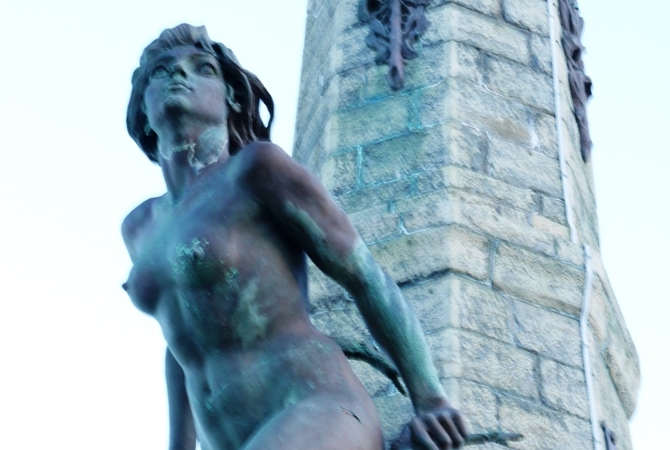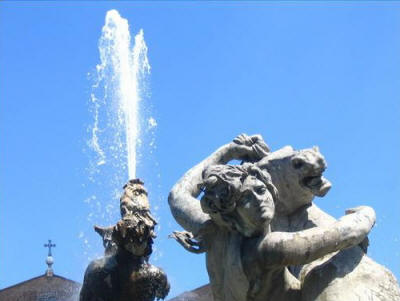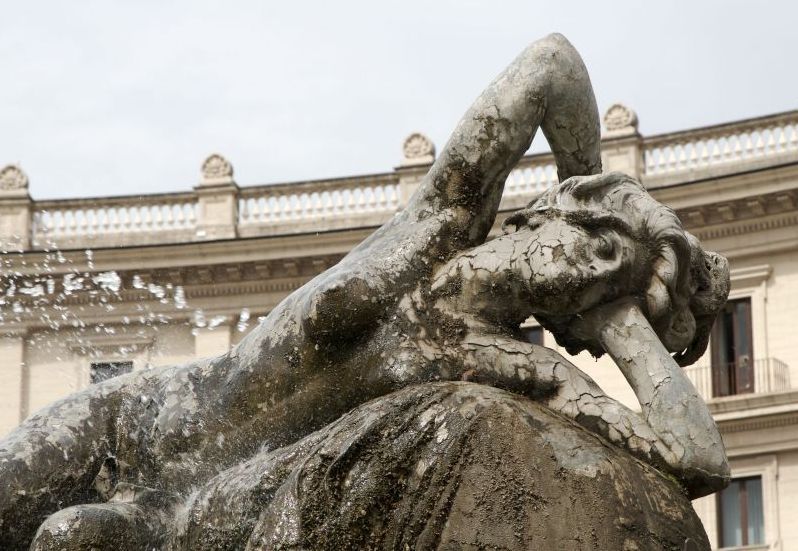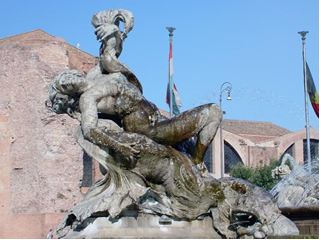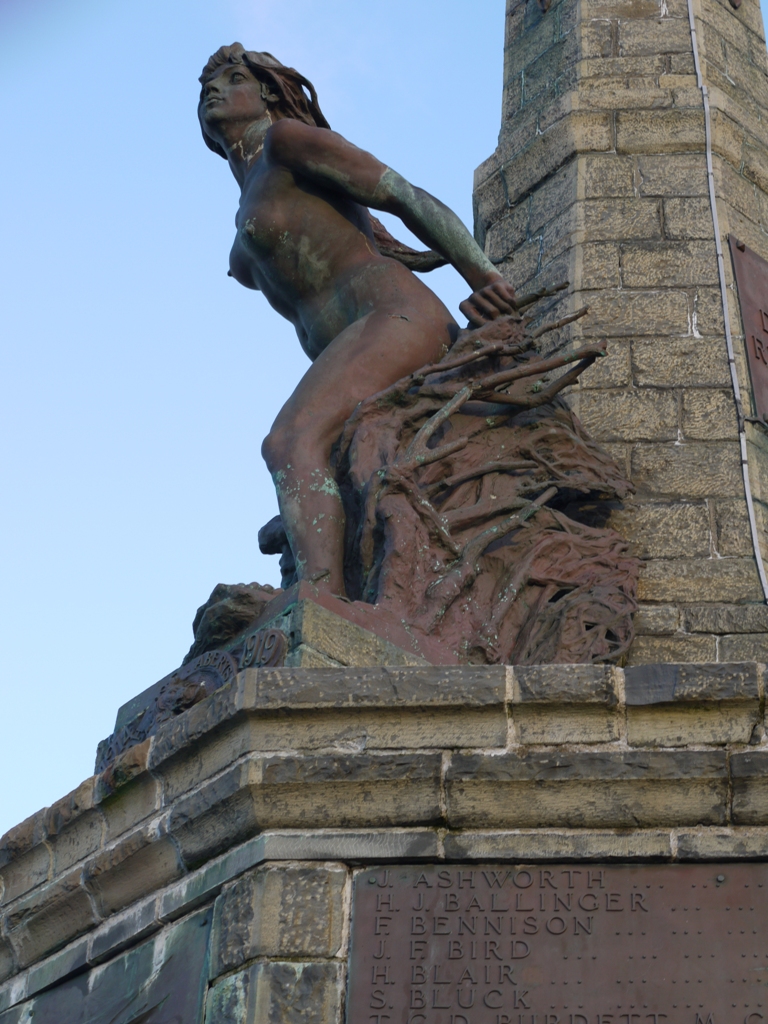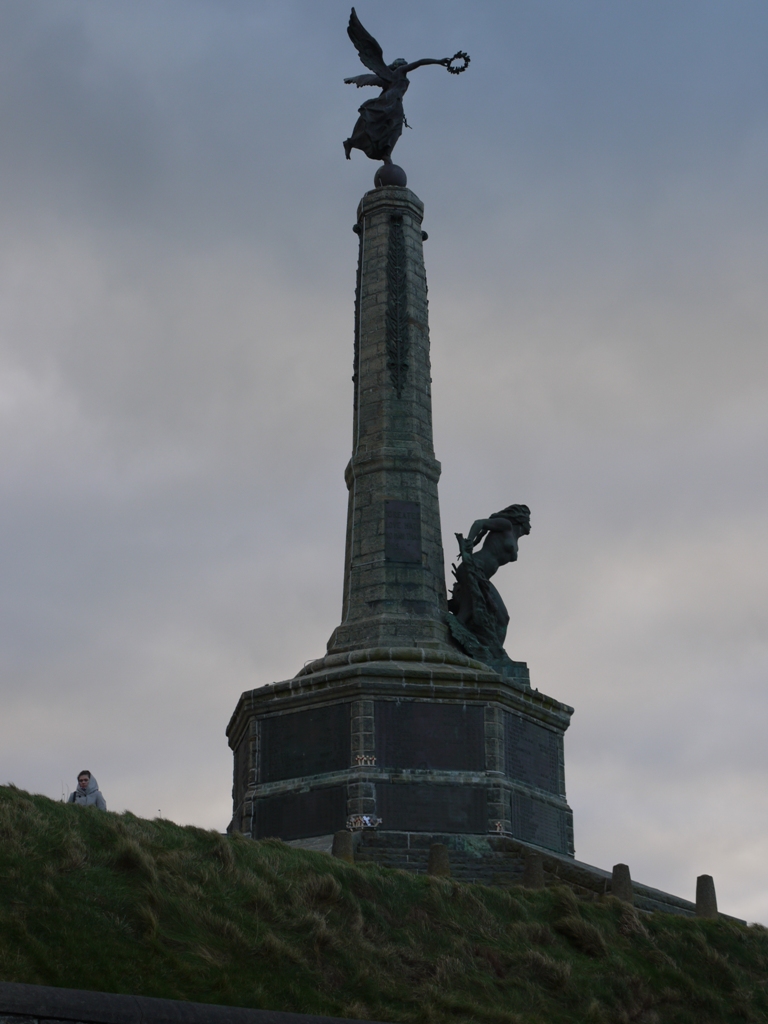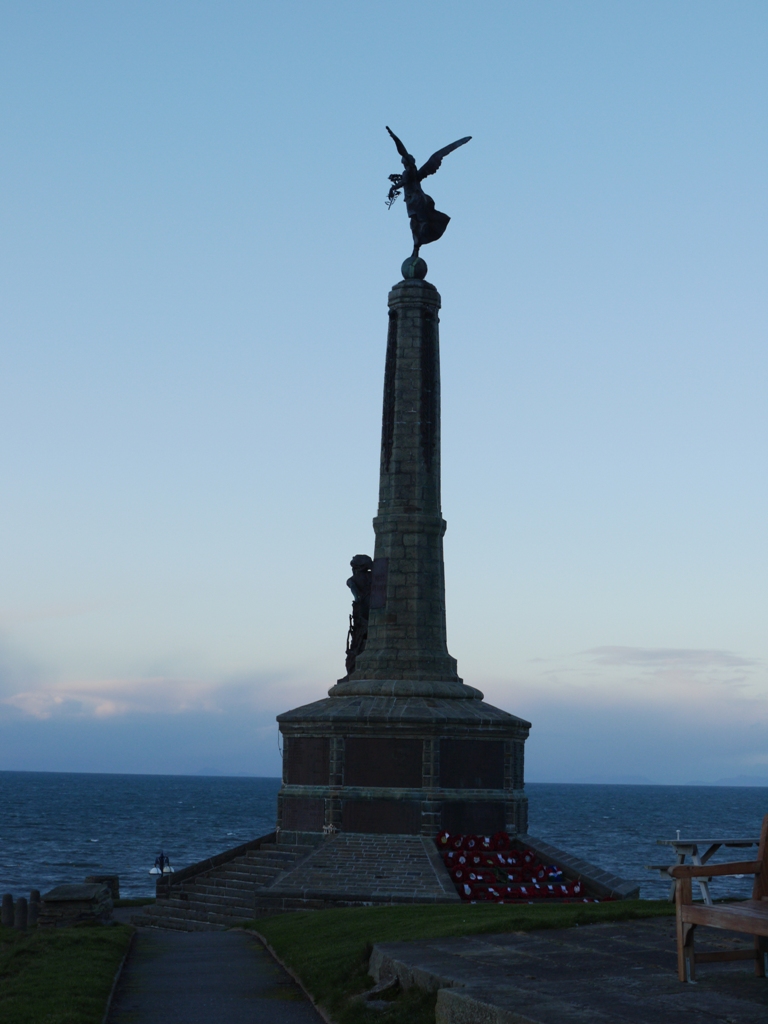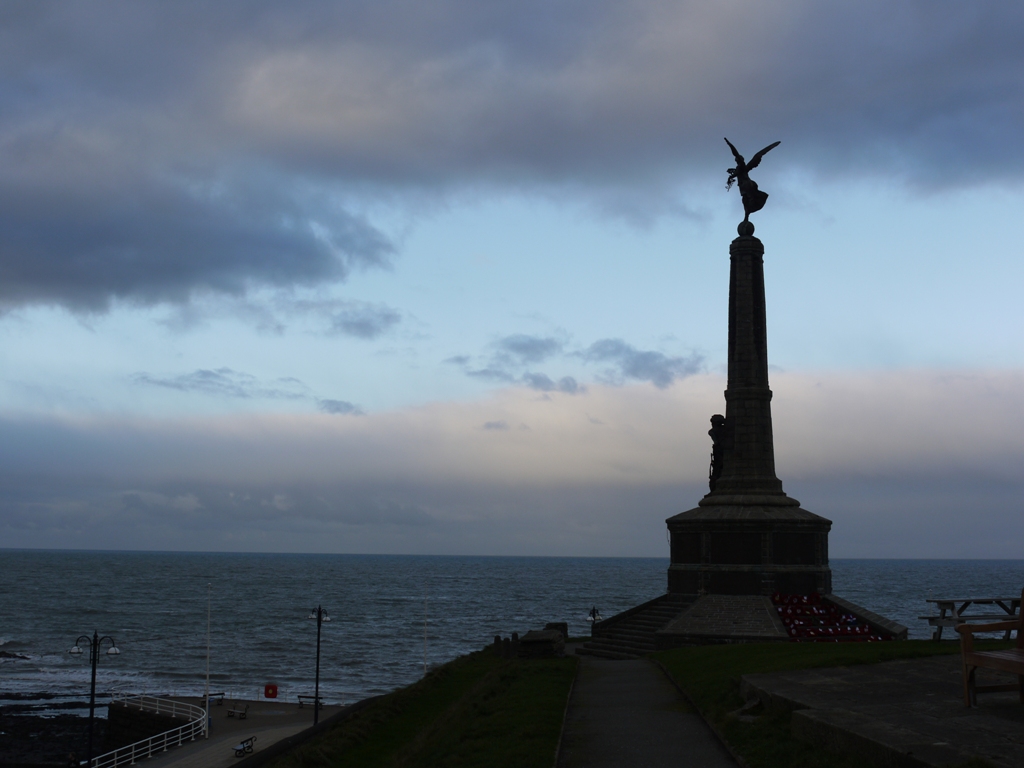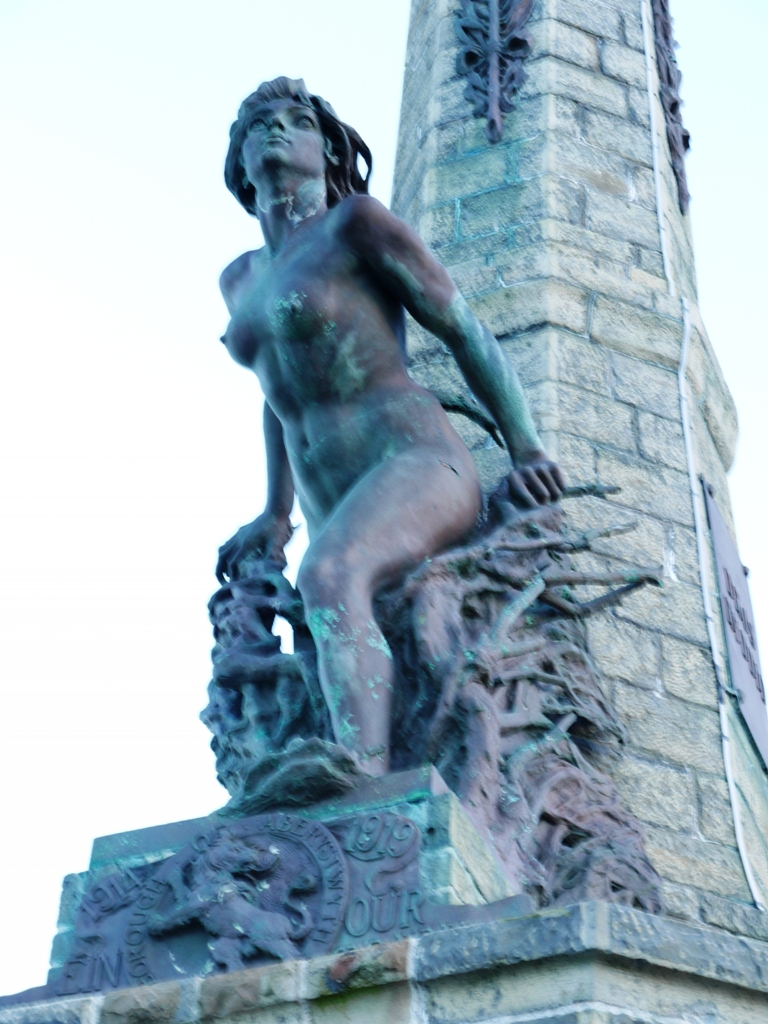by The Curious Scribbler
There have been several developments in the story of ‘Humanity emerging from the Horrors of War’, the somewhat unexpected sculpture at the foot of Aberystwyth’s war memorial. ( search ‘Rutelli’ in earlier blogs to follow the story). Through internet searches I had located an apparently identical sculpture, in Rome, which, according to Marco Demmelbauer, the restorer who had worked on her some twenty years ago, was called Verità esce dai rovi ( Truth emerges from the bushes).
Recently I had a message from Rome-based historian Nicholas Stanley Price who went in search of her at Via delle Quattro Fontane 18. He reported instead that she is now to be found at Via delle Quattro Fontane 15, next door to the Palazzo Barberini, home of the National Gallery of Art. She is indoors now, in a hallway, and the context of the pictures reveal that rather than being a precise duplicate, Truth is half the size of Aberystwyth’s lusty Humanity. Moreover there are some discernible differences, especially in the twiggy foliage from which the figure emerges.
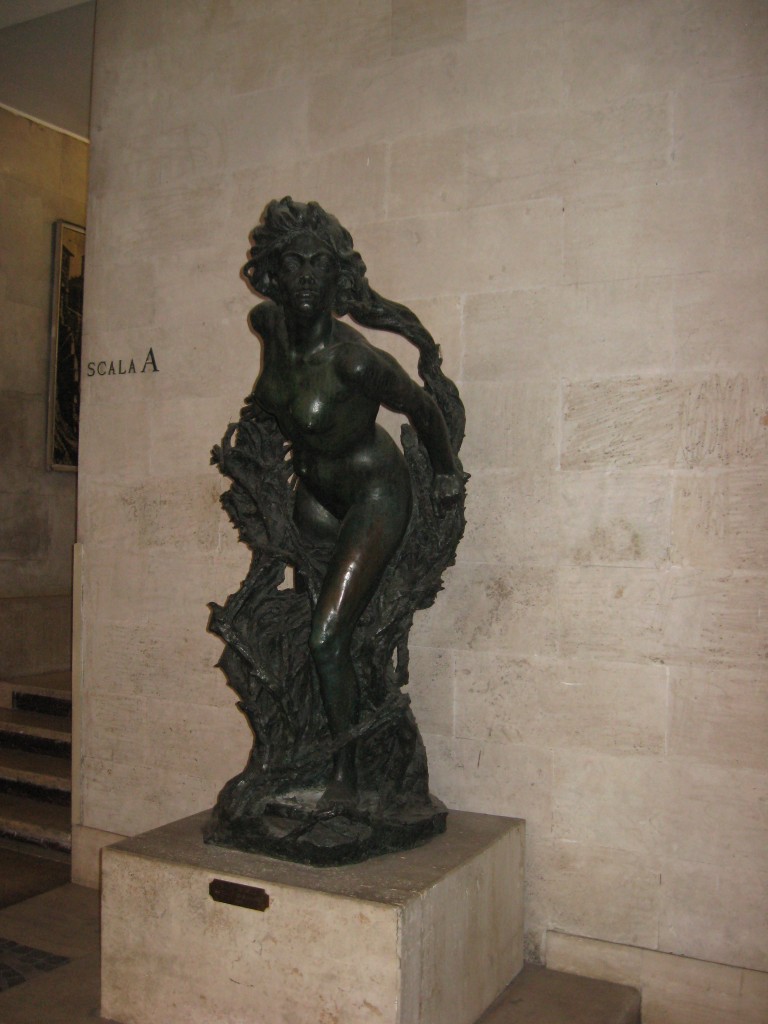
Truth emerging from the Bushes, in the hallway of Via Quattro Fontane 15, Rome Photo Nicholas Stanley Price
Now I have another correspondent, Alan Wynne Davies, who is off to Rome shortly to have a look at her. I hope he may be able to throw light on that sculpture’s history. I believe she was taken for restoration from an outdoor situation in the courtyard of a block of flats at No 15. It would be nice to find out when she was actually commissioned, and whether the design follows or pre-dates the Aberystwyth nude which records show was being cast in Rome in April 1922 and shipped by Thomas Cook to Liverpool in October 1922.
And in a separate strand, I was given the chance to follow up on a recurrent urban legend: that the Aberystwyth sculpture was modelled upon the wife of the proprietor of Ernie’s Fish bar in this town! The trail led to Nora James of Trefechan, a handsome elderly lady who is a local matriarch and daughter of the alleged model. Mrs James’ mother Maria Pelizza was married in Italy to Ernest Carpanini, an Italian who had worked in the restaurant and ice cream business in South Wales before the first world war. Moving first to Llanelli, the young bride found herself by 1922 in Aberystwyth where her husband Ernest and his partner Joe Chiappa opened a chipshop called ‘Ernie’s’ by the town clock. Maria spoke very little English and mainly worked in the kitchen, but both she, and the massive sculpture on the memorial were new to town, beautiful and Italian. Thus, I believe, the myth was born, perhaps as a tease by the customers.
Nora recollects that her mother always dismissed the allegation, and no member of the family supported the outrageous suggestion that she had ever modelled in the nude. However the the myth was accommodated with the vague suggestion that someone “had got hold of a photo of her face” and that this likeness was reproduced. More prosaically I think that the likeness was a coincidence born of the Italian features of Maria Pelizza and the Italian model in Rome.
Ernesto and Maria Carpanini founded an extensive Welsh family and most of their grandchildren work in or around Aberystwyth. It is a sad note that Nora recollects that her father, who was on account of his nationality interned on the Isle of Man for the entire second world war, returned home a shadow of his former self in 1945 and never fully regained his former spirits.

